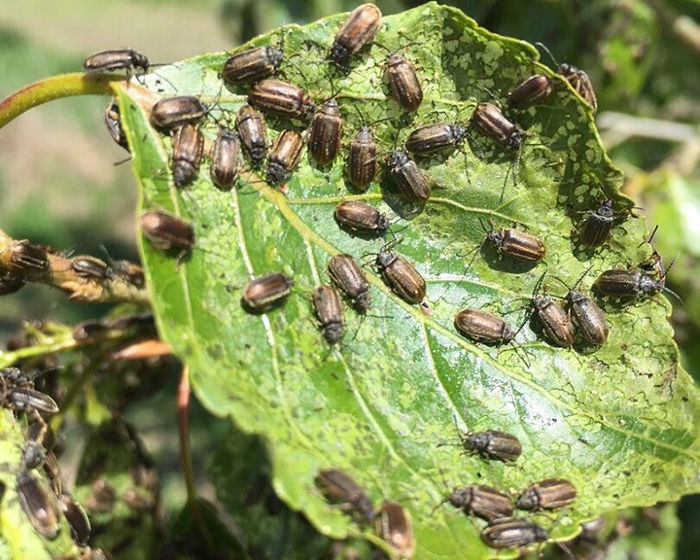
Grey leaf willow beetle
Cosmetic
The gray willow leaf beetle (Pyrrhalta decora) is an occasional pest on the
The larvae can eat or skeletonize leaves on a tree. If the trees are healthy, they will regrow leaves and the tree will survive. Death of trees due to feeding is uncommon. The damage is considered more cosmetic and troublesome to the homeowner.
Life cycle:
- Adults emerge in the spring; feed on leaves (but do not cause a lot of damage); reproduce then lay eggs on the underside of the leaves (June).
- Eggs hatch and develop into small black larvae which feed on the underside of leaves; this is the most destructive part of the life cycle.
- Larvae will either eat the majority of the leaf or make numerous holes or skeletonize the leaves (June / July).
- Mature larvae will fall to the ground (August) and tunnel into the ground where they pupate (turn into adults).
- In about two weeks they emerge as adults, feed on leaves for a few weeks then fall to the ground to over-winter and emerge the following spring.
- There is one generation per year.
Control:
- Control is usually not necessary or recommended. Several predatory birds and insects will feed on the eggs and the young larvae.
- Vacuuming the insects with a shop vac works well on large infestations.
- Having to regrow leaves is demanding on the trees, but if they are kept healthy, they will tolerate the feeding by the larvae. If only one tree (ornamental tree) is affected, covering the ground under the tree with plastic to prevent the larvae from tunneling into the ground will help control the pest.
Related leaf beetles will attack dogwoods.
Sources:

